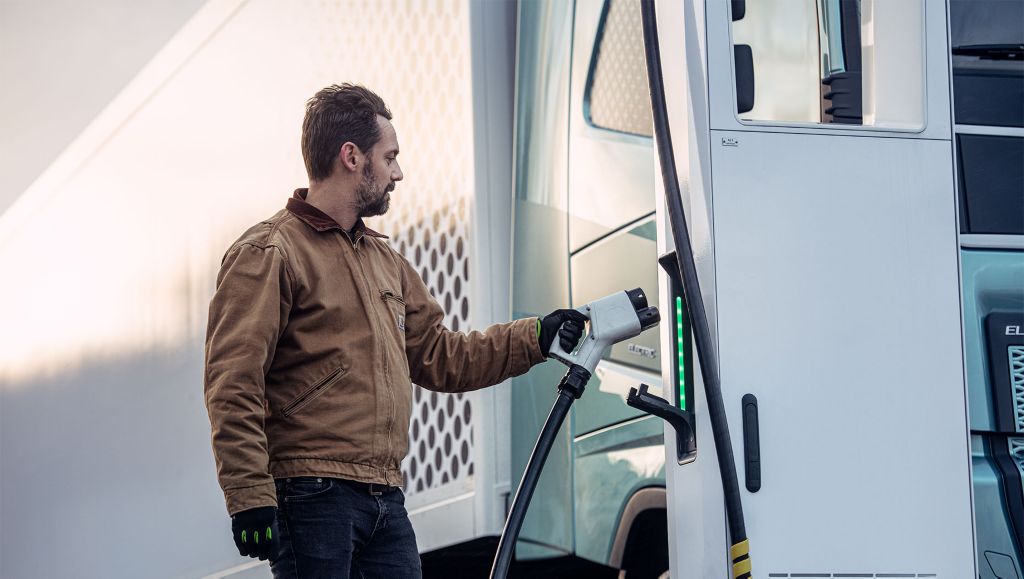While charging stations for passenger cars are an increasingly common sight, the same public infrastructure for trucks is virtually non-existent. However, recent developments suggest that this is about to change.

As it stands today, most owners of heavy electric trucks need to rely on charging equipment installed on their own premises, which limits their range. And while it is theoretically possible to charge an electric truck at a passenger car charging station, in most instances the physical layout of the station, such as parking spaces and fixed structures, make this impossible.
The reality is that if electric trucks are to scale up as much as needed to make a difference to climate change, a much larger network of charging stations will be required. The good news is that this is starting to happen with Europe in a leading position. The first public charging station for heavy-duty vehicles was opened in Gothenburg in 2021, with plans to open three more. Fuel station chain Circle K also plans to open the a public charging station for electric heavy-duty trucks, which is expected to be operational in 2022.
In July 2021, Volvo Group signed a non-binding agreement to establish a joint venture for building a public charging network for battery electric heavy-duty long-haul trucks and coaches across Europe. Together the parties involved intend to invest 500 million Euros to install and operate at least 1,700 high-performance green energy charging points within five years from the establishment of the joint venture.
“We’ve seen a big shift in just the last two years, where many charging providers who were not willing to discuss charging stations for trucks are now really enthusiastic about the idea,” says Magnus Broback, Charging Systems Director, Volvo Trucks. “This is because until recently there was no business case for it. But now that we’re seeing more electric trucks on the road, it makes sense that we should start investing in charging networks.”
Public-private collaboration
There is also a strong push from the public sector in Europe as well. The EU’s ‘Fit for 55’ package of proposed legislation, which aims to reduce carbon emissions by at least 55 percent by 2030, includes charging networks within its scope. The EU has for example presented a proposal for an Alternative Fuels Infrastructure Regulation (AFIR), which will put greater demands on member states to invest in charging infrastructure. In addition, the new General Block Exemption Regulation (GBER) is expected to make it easier for national governments to invest in public charging infrastructure.
“There is enough push from the private sector to ensure that the shift to electromobility will happen regardless,” says Magnus. “But public support, through regulations and state subsidies, will ensure the transformation happens much faster. And this is vital because with climate change, we cannot wait another 15 years.”
The impact of electric passenger cars
Meanwhile, the public charging infrastructure for passenger cars continues to grow and despite concerns about the capacity of electric grids, the impact on electric trucks will be positive. After all, both use the same CCS2 standard for charging up to 350 kilowatts – the key difference being that trucks require high voltage (500-750 volts), which all new charging stations can provide. Otherwise the only limitation preventing trucks from using car charging stations is the physical space around the charger.
“The two charging networks are more in synergy than in competition,” explains Magnus. “The passenger car network helps to create a similar ecosystem, which provides economies of scale, better knowledge of the technologies as well as business models.”
And as for exceeding the capacity of power grids? “That will no doubt be an issue in some places, but it’s solvable. After all, as a society we have been working with electric grids in over a century. It’s clear we will have to start preparing and expanding the network – as we have been doing for over 100 years – that is a challenge we can definitely overcome.”
Original Source: https://www.volvotrucks.com/en-en/news-stories/insights/articles/2021/nov/charging-infrastructure-for-electric-trucks.html

